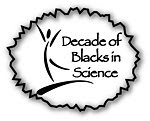The Connect a Million Minds campaign held a Math, Science & the Future of Our Nation Global Town Hall meeting earlier today. Here is a link to a video as why this is a very important matter.
When opportunity meets preparation
Many of us want opportunities and chance for grand lives. The conversation within families and communities must now include a frank dialogue about the role preparation, if it hasn’t already. As Astronaut Sally Ride shared before the Global Town Hall, she happened to see an ad in the university newspaper calling for applications to the NASA space program. Being an astronaut was a fantasy of hers, but as she read the list of requirements to apply, she realized that she had taken all of the required math and science courses and decided to give it a try. The rest is history.
How many opportunities have some of us (or our children) closed the door on, simply because of our disinterest in science and math? How many of us are blind to the many opportunities available in science, engineering, and technology?
My fear, is that the answer is too many, especially for individuals from communities of color who are still under-achieving in math and science class and under-represented in math and science classes and work industries.
Furthermore, how does the image of scientists and engineers and perception of science, technology, engineering, and math as ’uncool’ play into that? No doubt, a lot. In other nations, such as China, the smart kids are the ones who are admired and respected by peers. In Australia, youngsters compete to make good grades and take challenging courses in chemistry and physics. These young people celebrate the innovative genius of Bill Gates and Steve Jobs. Quite the opposite of US attitudes that avoid hard classes and turn in assignments late or our great pre-occupation to celebrate sports over academics. These attitudes result in an apathy for the subject matter, which leads to our poor standing in these subjects. That in turn leads to our nation’s declining ability to work in these industries.
But there is a cool factor to STEM. The popularity of Mythbusters, Adam Savage & Jamie Hyneman, attest to that. So does the participation of Video Game designer Kudo Tsunado, in the town hall. He explained how much math, such as algebra, calculus, and physics are apart of game design and development. Those games are math and science in action. When a designer has a god understanding of math, he/she designs better games. As the dialogue considered ways to change the attitudes of young people about science it really became apparent to me is that Profile matters. There is something to be said of raising the profile of individuals who are innovative. In this case, the media markets and starlets in entertainment could be king makers. With one simple tweet or mention or sincere gesture of acceptance, something becomes cool. Instantaneously.
And what can only be described as kismet, the December 2010 issue of GQ magazine features a spread of the Rock Stars of Science. By lending some if star power, the music industries brightest is sharing the limelight with some amazing scientists. In fact, this strategy is not new. It simply uses very smart social marketing strategies to create a cultural shift of attitudes about anything. And as I was reading another timely piece of online writing, Christopher A. Boudy’s post about "Where Are the Black Nerds At?" I thought of how dope it would be do a similar spread in an African-American target magazine, such as an Ebony, Source, or VIBE. Couldn’t you see a spread with Kanye West, Little Wayne, Mary J. Blige, Alicia Keys, and Drake standing in the lab or field with some of the brightest up-and-coming-scientists, engineers, and doctors. That would be so hype.































